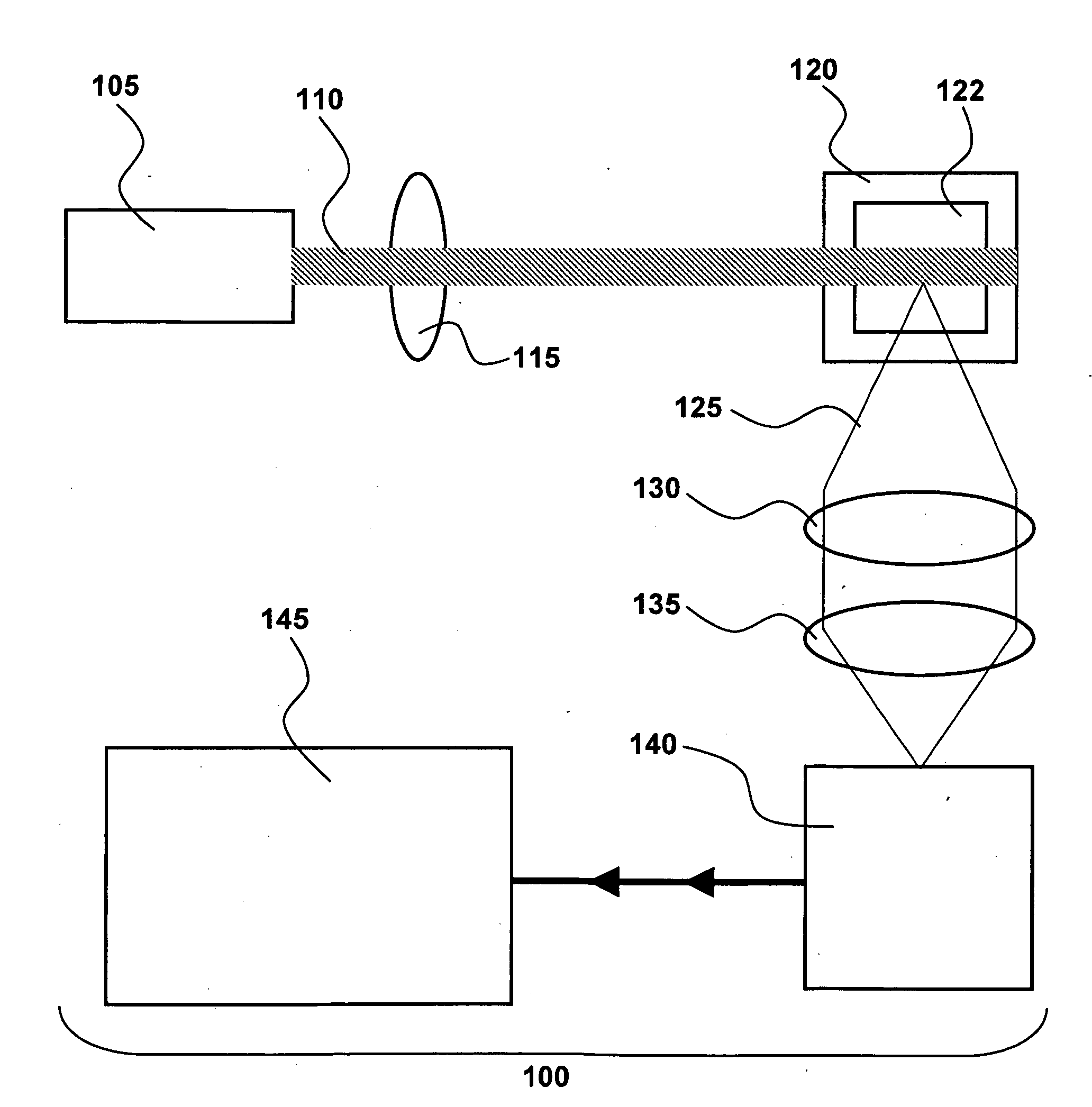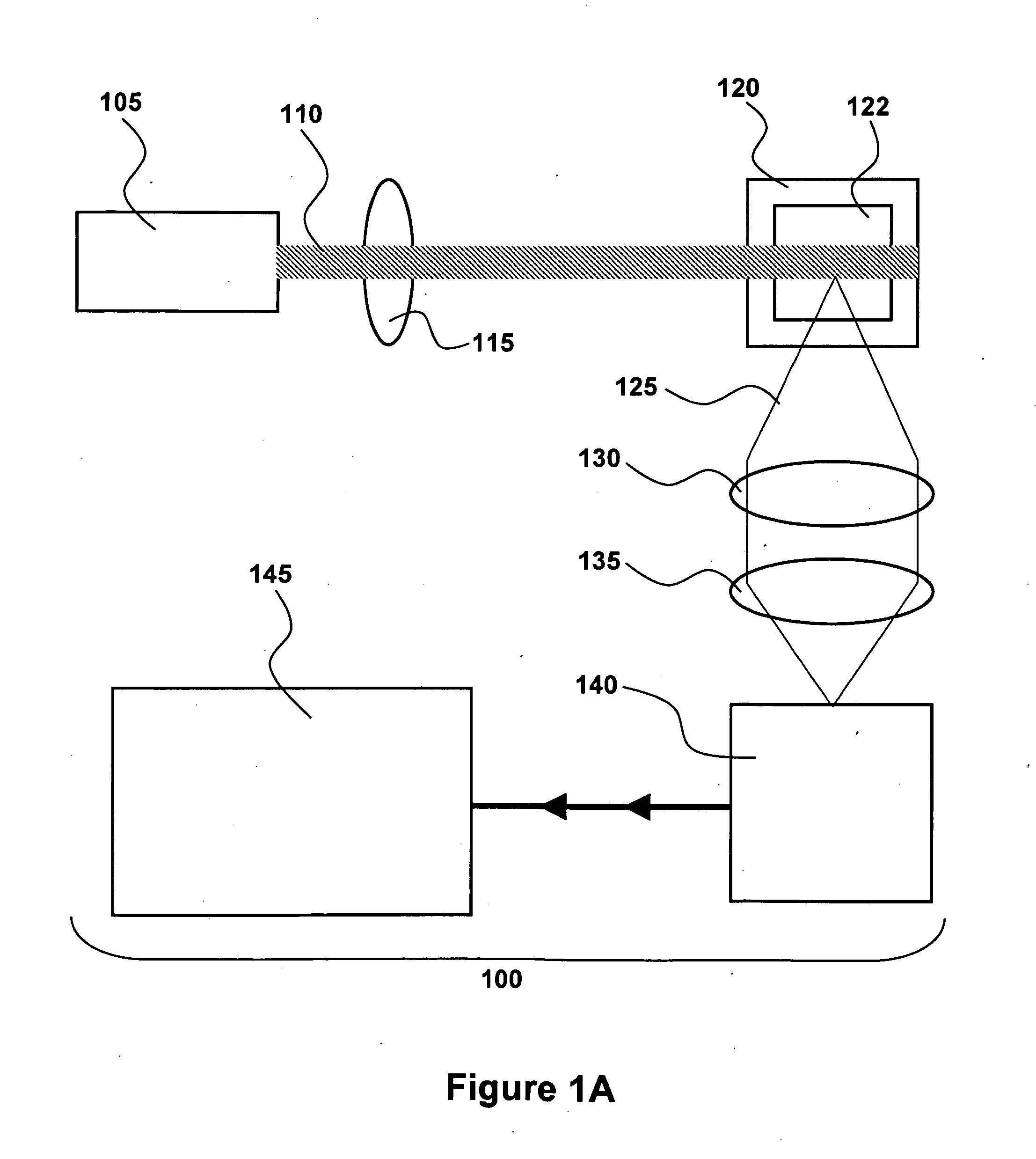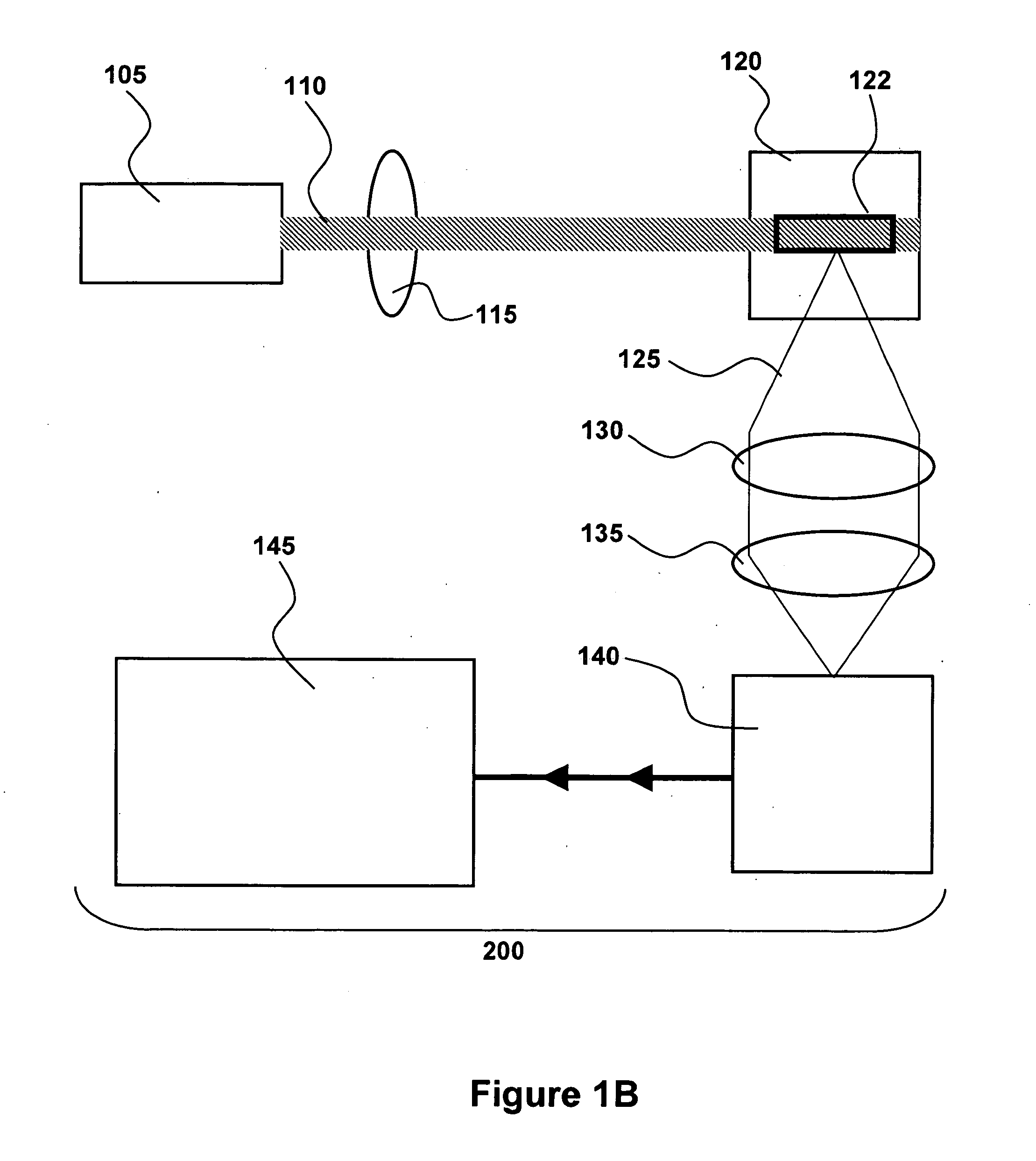Two-dimensional optical imaging methods and systems for particle detection
a two-dimensional optical imaging and particle detection technology, applied in the field of optical particle analyzers, can solve the problems of limiting the sensitivity and particle sizing capability, the state of the art optical particle counter is currently susceptible to problems, and the count adversely affecting the accuracy and sensitivity of the system, so as to improve the detection sensitivity, accurately and sensitively detect, and expand the sensing function
- Summary
- Abstract
- Description
- Claims
- Application Information
AI Technical Summary
Benefits of technology
Problems solved by technology
Method used
Image
Examples
example 1
Two Dimensional Imaging-Based Optical Particle Counter
[0088]The performance of an imaging-based optical particle counter of the present invention was experimentally evaluated. The optical particle counter of this Example uses a non-orthogonal optical geometry to allow high resolution, two-dimensional imaging of light scattered from particles in a fluid flow (e.g., liquid phase particle counting). The results provided herein demonstrate that the present imaging-based optical particle counter provides a robust sensing platform providing enhanced sensitivity over conventional optical particle counters.
[0089]One challenge for particle counting in ultra pure deionized (DI) water is that under many conditions such samples, for example as used in semiconductor fabrication or pharmaceutical production facilities, are very clean and typically include small numbers of very small particles. Deionized water is typically prepared by passing through one or more ion exchange resins to remove ion i...
example 2
Advanced Image Processing Methods for Optical Particle Counting
[0104]Imaging-based optical particle counters of the present invention integrate advanced image processing methods allowing for the sensitive detection and size characterization of particles at low concentrations with cross sectional dimensions as low as about 40 nanometers. This Example provides a description of certain imaging processing methods of the present invention providing enhancements relative to conventional imaging-based approaches to particle detection. Features of the present image processing methods include: (i) pixel culling wherein pixels are filtered so only those pixels that exceed a threshold value (the “threshold”) and neighboring pixels are retained and analyzed to provide particle size information; (ii) generation and real time analysis of composite images from multiple frames acquired by the imaging system, wherein pixels associated with a particle detection event from a plurality of frames are co...
PUM
| Property | Measurement | Unit |
|---|---|---|
| time interval | aaaaa | aaaaa |
| diameter | aaaaa | aaaaa |
| time | aaaaa | aaaaa |
Abstract
Description
Claims
Application Information
 Login to View More
Login to View More - R&D
- Intellectual Property
- Life Sciences
- Materials
- Tech Scout
- Unparalleled Data Quality
- Higher Quality Content
- 60% Fewer Hallucinations
Browse by: Latest US Patents, China's latest patents, Technical Efficacy Thesaurus, Application Domain, Technology Topic, Popular Technical Reports.
© 2025 PatSnap. All rights reserved.Legal|Privacy policy|Modern Slavery Act Transparency Statement|Sitemap|About US| Contact US: help@patsnap.com



